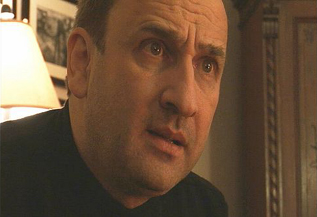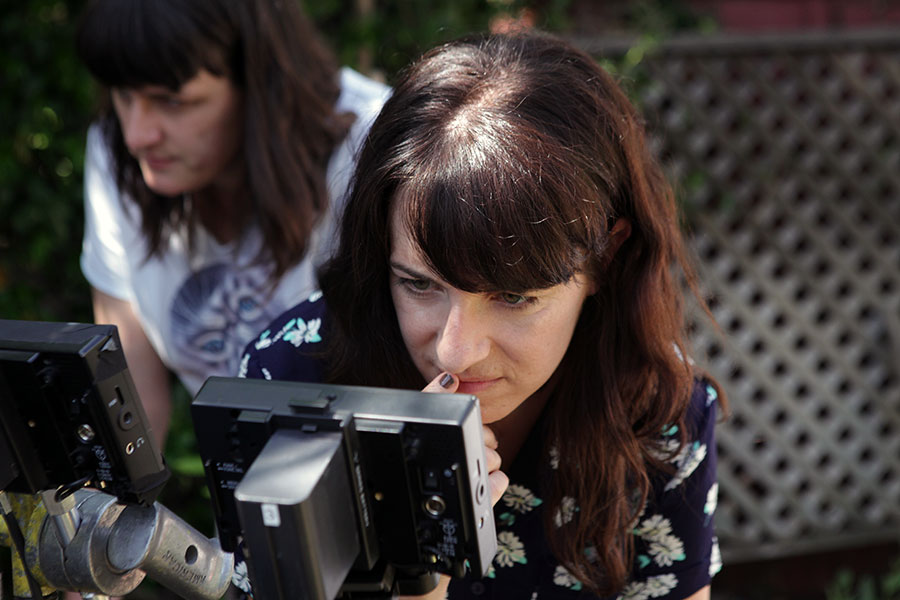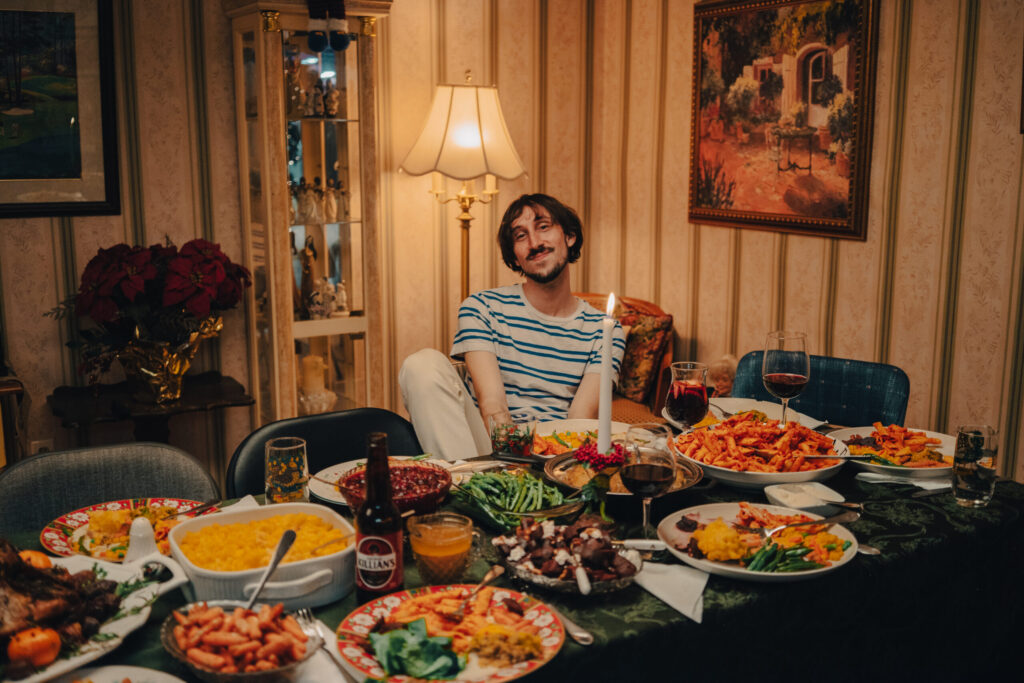You Can Make a SAG Feature for Less Than $10,000!
 From his artistic home at The Stella Adler Theatre, STAN HARRINGTON has been a prolific producer of theatre since 1996. Specializing in guerilla theatre, he has produced, directed, written and acted in many critically acclaimed and award winning plays. In 2003 he created Adler After Dark, a platform which offers writers an opportunity to present their shows rent free.
From his artistic home at The Stella Adler Theatre, STAN HARRINGTON has been a prolific producer of theatre since 1996. Specializing in guerilla theatre, he has produced, directed, written and acted in many critically acclaimed and award winning plays. In 2003 he created Adler After Dark, a platform which offers writers an opportunity to present their shows rent free.
In 2005, Stan’s first guerilla feature film, Bred in the Bone, shot for a mere $5,000, was named the Grand Prize Winner at the Action On Film International Film Festival, held at the Long Beach Convention Centre in California. As well as Best in Show, Bred in the Bone also won Best Screenplay for Stan Harrington and Best Actress for Blythe Metz.
In October he also garnered the Best Feature award at FAIF International Film Fest, and in April 2006 was an invited speaker at the NAB Conference in Las Vegas, the largest electronics show in the world.
His latest film THE CRAVING HEART, which he shot for $8,000, is currently on the festival circuit and his book A Guerilla In The Midst, which is an insight into the art making of a no-budget movie, is due for release by Christmas 2006.
We recently spoke with him about no-budget filmmaking, his new networking website, and the pros of going SAG on a low budget film.
—–
SAGINDIE: How did you become interested in filmmaking?
STAN HARRINGTON: I was born in Melbourne, Australia and my parents were Greek Immigrants who had me late in life. They enjoyed old movies and as a young boy, I never really had the typical 8pm curfew that most others did. I consequently grew up watching the classics and was pretty much a movie buff by the time I was in High school.
What was your first filmmaking experience?
SH: I tried to make my first film 4 or 5 years ago when I happened across some free 35mm footage. I made a teaser for a feature that I wrote but never tried to get it out as I felt it didn’t represent my work as a director. The restrictions of money and equipment were too much as we were shooting with an MOS camera (no sound) and couldn’t afford the mechanisms that would allow us to pull or follow focus. All the actors therefore had to be the same difference from the camera at all times so as not to go out of focus… no way to direct… I still have it… I may show it to someone… one day…
What drew you to the guerilla filmmaking ethos?
SH: NECESSITY. Pure and simple. I came here and didn’t want to wait for things to happen so the only way to make a movie with no money is to do it guerrilla style.
What is important about guerilla filmmaking?
SH: The most important thing is not to get frustrated… it is usually a venture that will require a filmmaker to do most things on their own. There is a chapter in my book that is entitled “What Can Go wrong Will Go Wrong,” and although it is a cliché, it is also a fact. It is key that you go in knowing that so that when the proverbial hits the fan, you handle it… In some cases it is actually a blessing, even if it looks like it may be the end of the world at that time. Bred in the Bone is a classic example. The fascination that it garnered came from the fact that I edited the whole thing myself when my editor quit. He left his old Dell at my place so I called Sony (it had Vegas Editing Software on it) and asked for tech help. I was, as some have described, “Email challenged,” so when they suggested that I try to use the SONY forum, I nearly flipped. Nevertheless, I did so and managed to do the whole thing well enough to win a succession of awards. When SONY and The Sundance Media Group heard about it everything changed… press, offers of equipment, software, suddenly the world opened up to me. So, to summarize, the most important thing is to FINISH… regardless of what you have to endure…
How hard is it to make a feature for under $100,000?
SH: Anyone can make a feature for under $100,000… the key is to make something worthy. The hardest thing is not so much the budget as it is the story and the execution in bringing it to life…
What made you decide to develop the IGFdb website?
SH: I did nearly everything alone on my first feature, Bred in the Bone, and it taught me so much… nevertheless, I could have saved myself so much time and effort had I know a couple of simple things… for this reason I wrote the book…to pass on the information. I was fortunate to be asked to speak at the 2006 National Association Of Broadcasters (NAB) Show in Vegas about Guerrilla Filmmaking. After my lecture I was approached by others to travel to other states to do the same but I explained that I was about making films… not teaching. A friend then suggested writing the book on it which I did and it was done with the view of passing on everything that I learned and discovered… resources, information, equipment… To back it up, I also started a website called The International Guerrilla Film Data Base which is a hub for guerrilla and indie filmmakers. I have put everything I could on there, set up a forum, I promote filmmakers and film festivals and basically encourage all to log on and take whatever they want… and leave a little behind if they know of any cool resources. One man’s trash is another’s treasure so I hope that all aspiring filmmakers will take advantage of this great resource… it is free and it is a hub for all things from pre to post production. IGFdb seemed like a nice compliment to the Adler After Dark program that I started to encourage and help writers to get their work out.
What kind of response has the site gotten?
SH: So far the response is great considering it is operating purely through word of mouth… over 50 members and almost half have added their links to their sites… festivals are also signing on and now with the support of SAGIndie and The Sundance Media Group, I believe that it will be a huge resource once it is officially announced. Also, the site is not just for post stuff or festivals or cameras like most sites… the other sites specialize which is great, but with almost 50% of members actually being filmmakers, I believe that this site should cover everything, even if it is just a way of directing people to other specific sites… It should be like a home or hub where all things can stem from.
A lot of low budget filmmakers forgo working through SAG. Why did you decide that going union was an important thing?
SH: I want SAG involved because it adds credibility to the project. In the past, going SAG was considered prohibitive for most indie and guerrilla filmmakers, but that has changed. Too many people do not educate themselves about all aspects of the process and this, as far as SAG has gone, leads to a lot of misconceptions. The advances that have been achieved by SAGIndie make it not only possible to shoot under a union contract, but they have also made it desirable and even imperative. No decent actor will work without a SAG agreement and if they do you risk too much for them. Going SAG now is financially viable, preferable and I consider it very much a badge of honor… it says LEGITIMATE!
Tell us a little about your filmmaking process. You wear so many hats on set – how does that work for you?
SH: Again, the key is to educate yourself in everything… even if it is not what you are directly handling… If you are the filmmaker it is your responsibility to know everything… KNOWLEDGE IS POWER, so although it is preferable not to do everything yourself, you should be prepared for everything and anything…
As producer, do you find your films to be an easy sell? Or do you just finance them yourself?
SH: I financed everything myself… no one wants to give money to an unknown. So in taking my career into my own hands, taking charge and completing a film, I have managed to get people to pay attention… now money is being discussed. The most important thing is to complete the project… So few people ever do. They all have opinions and advice but most have never completed anything. Finishing a script or movie or show is an achievement in itself.
Is it easy to get people like John Saxon or Adrian Zmed to work on a film like Craving Heart?
SH: Getting recognized actors to want to work for you is not as difficult as it may appear… The script is what attracted John Saxon to The Craving Heart and he won a Best Supporting Actor award for his role. Good actors want good material so the basis of everything that I do is the script… It all starts and ends there the emphasis has somehow shifted to the technical these days instead of the content… Be a great writer. Learn how to write a great story… not necessarily from a screenplay book. Go to a theater school. I went to Stella Adler and learned from the material of great playwrights, Albee, Miller, Williams, Shanley, Inge, etc… They were household names, some still are, but you would be pushed to think of as writer of movies or plays these days that are household names…
Getting John and Adrian to actually read it though, was largely due to the fact that they were informed about my earlier success so it goes back to finishing… actors are always asked to read things but you need to have the credibility of being someone who completes things… who does what he says he is going to do. In other words, the simple act of finishing something was what started it all. Being a good writer was what nailed the deal.
What kind of commercial expectations do you have for Craving Heart? Do you expect to go to video, or are you looking for theatrical distribution?
SH: The Craving Heart was made more as a calling card… I wanted people to say, “Wow. If he can do that with only $8,000, what will he do for $800,000?” Fortunately, it is working out. So my expectations have never been much beyond a couple of fests and a DVD release. The goal is to get money for the next thing so I can get other artists involved in the filmmaking process and not have to do it all alone.
What has the response been to Craving Heart?
SH: The reviews so far have been awesome… and there are more coming…
What’s next for you?
SH: I am being approached by a producer to write a project that I am not at liberty to discuss but it has a substantial budget with a big name attached… as for my personal film, I am writing a Western… but a Western with an edge!!! It is budgeted at $200,000 so I am hoping that this time we will get some financial support… I have also agreed to tour on a limited scale… my next speaking engagement is in Chicago in March…
Open mic time – what would you like to say to our readers?
SH: I want filmmakers to be great storytellers… to go back to the roots… after all a film is a story told in pictures. For Guerrilla filmmakers… this is our time. Where we could not afford to make films in the past and then when video cameras came along to enable us to do so, we couldn’t get them distributed. Now the world has turned upside down and anyone can be seen or heard… there is no longer merely a hand full of networks or studios… there are hundreds of channels through cable and satellite, internet, iPods, self distribution deals… Many new and forward thinking festivals, like the Foundation For The Advancement Of Independent Film, even hold their festival at The world famous Mann’s Chinese Theater… never has there been this opportunity to screen and distribute product. The effects and fears are evident in the rush to buy up avenues such as MySpace and YouTube… the music industry has felt the effects, and now, whoever doesn’t see the writing on the wall in those huge production houses and studios, is going be in for a nasty surprise… The world of movie making is open to all now so no one with a dream in filmmaking should fear not being seen or heard… you just need the determination to finish, the dedication to educate yourself (especially in how to write a story), and a passion… because people will feed from it…
For more on The Craving Heart, visit www.xristosproductions.com.




